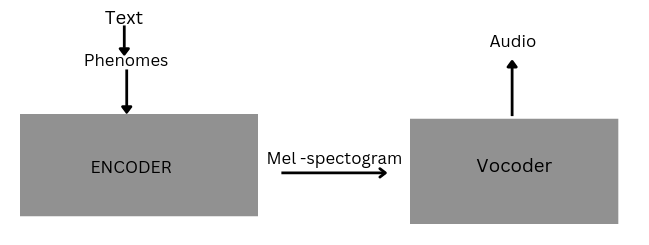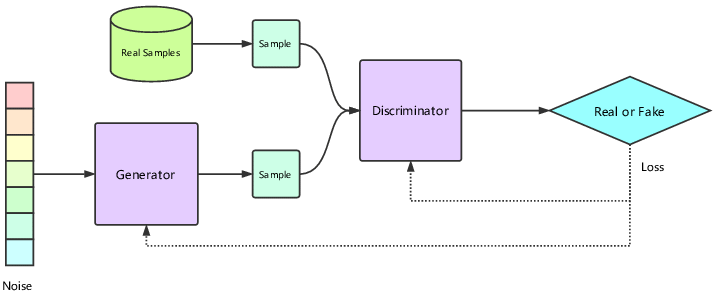Table of Contents
1. TTS: The Dawn of a New Era in Communication
2 . StyleTTS2 Architecture and Training: Crafting Lifelike Voices with Precision
3. Kokoro: A Faster Alternative to StyleTTS 2
What if a machine could whisper words of comfort or deliver a laugh so genuine, you’d forget it wasn’t human? Welcome to the era of StyleTTS2.
Introduction
Imagine a world where machines don’t just speak but truly communicate—where synthetic voices are indistinguishable from human ones, brimming with emotion, nuance, and personality. This vision is closer than ever, thanks to groundbreaking advancements in Text-to-Speech (TTS) technology, particularly through innovations like StyleTTS2 and the emerging Kokoro model. These systems are redefining speech synthesis by blending cutting-edge techniques such as style diffusion, adversarial training, and large-scale Speech Language Models (SLMs). StyleTTS2, for instance, leverages probabilistic style sampling to dynamically adapt prosody, tone, and emotional depth, achieving human-like expressiveness and naturalness. Meanwhile, models like Kokoro aim to push these capabilities even further, setting new standards for realism and adaptability.
But here’s the exciting part: StyleTTS2 isn’t just about better sound quality—it represents a pivotal step toward bridging the gap between artificial intelligence and human-like interaction. While achieving Artificial General Intelligence (AGI)—machines capable of reasoning, understanding context, and self-learning—remains an elusive goal, innovations like StyleTTS2 bring us closer than ever before. Together, these advancements challenge the boundaries of how machines interpret language and express meaning, paving the way for a future where AI voices resonate with unparalleled authenticity.
TTS: The Dawn of a New Era in Communication
Text-to-Speech (TTS) technology has long been the bridge between text and voice, but its evolution is transforming it into something far more profound—a tool for genuine connection. In its early days, TTS relied on rule-based systems and rigid concatenative methods, stitching together pre-recorded audio snippets to form robotic, monotone outputs. While functional, these systems lacked the emotional depth and natural flow that define human speech.
The game-changer came with deep learning, where models like Tacotron and WaveNet introduced neural networks to synthesize smoother, more expressive voices. However, the real revolution lies in modern methodologies like diffusion models, adversarial training, and large Speech Language Models (SLMs). These innovations enable TTS systems to dynamically adapt tone, emotion, and prosody, creating voices that aren’t just heard but felt.
Today’s TTS isn’t just about converting text to sound—it’s about crafting lifelike interactions. With advancements like StyleTTS2, machines can now generate speech that mirrors human nuance, from subtle pauses to bursts of excitement, all without needing reference audio. This leap marks the dawn of a new era where TTS becomes a medium for storytelling, empathy, and authentic communication.
StyleTTS2 Architecture and Training: Crafting Lifelike Voices with Precision
At the heart of StyleTTS2 lies a powerful architecture combining an Encoder and a Vocoder , working seamlessly to transform text into natural, expressive speech. Let’s dive into how each component works and what makes this model revolutionary.

How the Encoder Works?
The Encoder operates through a series of well-defined steps:
1. Text Input :
The process begins with the input text, which is first converted into phonemes —the smallest units of sound in human speech. This phoneme representation serves as the foundation for generating speech.
“Hello, how are you?” —–> həˈloʊ | ˈhaʊ ɑːr juː?
Text Phonemes
2. Style Vector :
The phonemes are then transformed into a fixed-length style vector . This vector is sampled using a diffusion mechanism within the Generator of the GAN. The style vector guides the tone, emotion, or accent of the speech, ensuring diverse and expressive outputs without requiring reference audio.
3. Output :
The final result is a clean, high-quality Mel-Spectrogram that visually represents the text in the desired style.
How the Encoder is Trained?
To train the Encoder, we require paired data of text and audio, where the text is represented as phonemes and the audio is represented as a Mel-Spectrogram . The Encoder’s training process is powered by two key innovations: Generative Adversarial Networks (GANs) and a diffusion mechanism within the generator.
GAN Architecture
The Encoder employs a Generative Adversarial Network (GAN) to refine the quality of the generated Mel-Spectrograms. The GAN consists of two components:

GAN WORKING
Generator :
The Generator creates a Mel-Spectrogram from the input text . Its goal is to produce something so realistic that it fools the Discriminator into thinking it’s real.
Discriminator :
The Discriminator evaluates whether the Mel-Spectrogram is real (from original audio) or fake (generated by the Generator). It provides feedback to the Generator, pushing it to improve.
This adversarial process continues until the Generator produces Mel-Spectrograms so good that the Discriminator can’t distinguish them from real ones. This competition ensures unparalleled realism and expressiveness in the generated speech.
Diffusion Mechanism in the Generator
The diffusion mechanism is a key innovation in StyleTTS2, setting it apart from traditional TTS models. Instead of directly generating the entire Mel-Spectrogram, the model samples a style vector through a diffusion process. Here’s how it works:
DIFFUSION MECHANISM

1. Initial Noise :
The Generator starts with a rough, noisy Mel-Spectrogram based on the input text.
2. Add Style Vector :
A fixed-length style vector is introduced to guide the tone, emotion, or accent of the speech.
3. Refinement :
The diffusion process gradually refines the noisy Mel-Spectrogram:
– It removes noise and enhances details in stages.
– The style vector ensures the output matches the desired speaking style.
4. Final Output :
The result is a clean, high-quality Mel-Spectrogram that mirrors the input text with the desired emotional depth.
This approach allows StyleTTS2 to dynamically adapt prosody, tone, and emotion, creating voices that feel truly alive.
The Vocoder: Bringing Sound to Life
The Vocoder in StyleTTS2 is responsible for converting the high-quality Mel-Spectrogram generated by the Encoder into natural, expressive speech audio. It serves as the final step in the synthesis pipeline, transforming the visual representation of sound into an audible waveform.
How the Vocoder Works?
The Vocoder takes the Mel-Spectrogram as input and generates the corresponding waveform through advanced neural architectures. StyleTTS2 employs two types of vocoders:
– HiFi-GAN-based : Directly generates high-fidelity waveforms with exceptional clarity and speed.
– iSTFTNet-based : Produces magnitude and phase information, which is converted into waveforms using inverse short-time Fourier transform (iSTFT) for faster inference.
Both architectures use the snake activation function , proven effective for waveform generation, and incorporate Adaptive Instance Normalization (AdaIN) to model style-dependent speech characteristics.
How the Vocoder is Trained?
The Vocoder is trained using paired data: Mel-Spectrograms (input) and their corresponding raw audio waveforms (output). The training process minimizes the difference between the generated audio and the ground truth audio, ensuring high-quality output. Advanced techniques like GAN-based training are employed to refine the waveform generation process, ensuring smooth, natural, and human-like speech.
By leveraging these methods, the Vocoder ensures that the final synthesized speech is not only accurate but also rich in detail and emotional nuance, bridging the gap between artificial and human communication.
Versatility and Adaptability of StyleTTS 2
StyleTTS 2 is inherently designed to support multilingual and multi-speaker synthesis , making it versatile for diverse applications. It can generate speech in multiple languages by leveraging phoneme-based input representations and adapt to various speakers using style diffusion and speaker embeddings. For specific needs, StyleTTS 2 can be fine-tuned for a particular language or speaker with significantly less data compared to training from scratch.
For example, fine-tuning requires only 1 hour of speech data for a language or a short 3-second reference audio for a speaker. This data-efficient approach ensures high-quality results while maintaining the model’s flexibility and performance. By fine-tuning, StyleTTS 2 achieves tailored outputs for niche languages or personalized voices without extensive computational resources.
Kokoro: A Faster Alternative to StyleTTS 2
Kokoro builds on the foundation of StyleTTS 2 but introduces key optimizations that make it significantly faster while maintaining high voice quality. These improvements make Kokoro a standout choice for real-time and resource-efficient applications.
What makes kokoro special?
1 . No Diffusion Steps :
– Eliminates iterative refinement in the generator, drastically reducing computational overhead.
– Directly generates high-quality Mel-Spectrograms, ensuring faster inference without compromising on expressiveness or naturalness.
2 . ISTFTNet Vocoder :
– Employs ISTFTNet , a lightweight vocoder optimized for speed and memory efficiency.
– Converts Mel-Spectrograms into waveforms using inverse short-time Fourier transform (iSTFT), enhancing both training and inference speed.
3. Resource Efficiency :
– Requires fewer computational resources for training compared to StyleTTS 2.
– Achieves high-quality synthesis with smaller datasets, making it ideal for real-time and low-resource applications.
4. Performance :
– Sets a new benchmark for TTS models by balancing speed and quality.
– Matches or exceeds StyleTTS 2 in terms of naturalness and expressiveness while being significantly faster during inference.
Conclusion: Bridging Human and Machine Communication
StyleTTS2 and Kokoro redefine Text-to-Speech (TTS) with style diffusion, adversarial training, and advanced vocoders, creating lifelike, expressive speech. StyleTTS2 sets new benchmarks in realism, while Kokoro enhances speed without quality loss. These innovations drive seamless, empathetic AI-human communication.
Beyond TTS, these models advance Artificial General Intelligence (AGI) by enabling nuanced, emotionally adaptive speech. As AI refines human-like interaction, TTS becomes a cornerstone for AGI’s evolution. With ethical safeguards, StyleTTS2 and Kokoro bring AI voices closer to human authenticity.










So I tried soso66 the other day. Not bad, not amazing. The interface is pretty easy to use, especially on mobile. Might be a good option if you like playing on your phone. See what you think: soso66
FC7777login? Alright, alright, let’s see what you got. Hope the login’s smooth ’cause ain’t nobody got time for glitches! Give it a whirl fc7777login.
Magnificent goods from you, man. I have understand your stuff previous to and you’re just extremely great. I really like what you have acquired here, certainly like what you’re saying and the way in which you say it. You make it entertaining and you still take care of to keep it sensible. I cant wait to read much more from you. This is actually a tremendous web site.